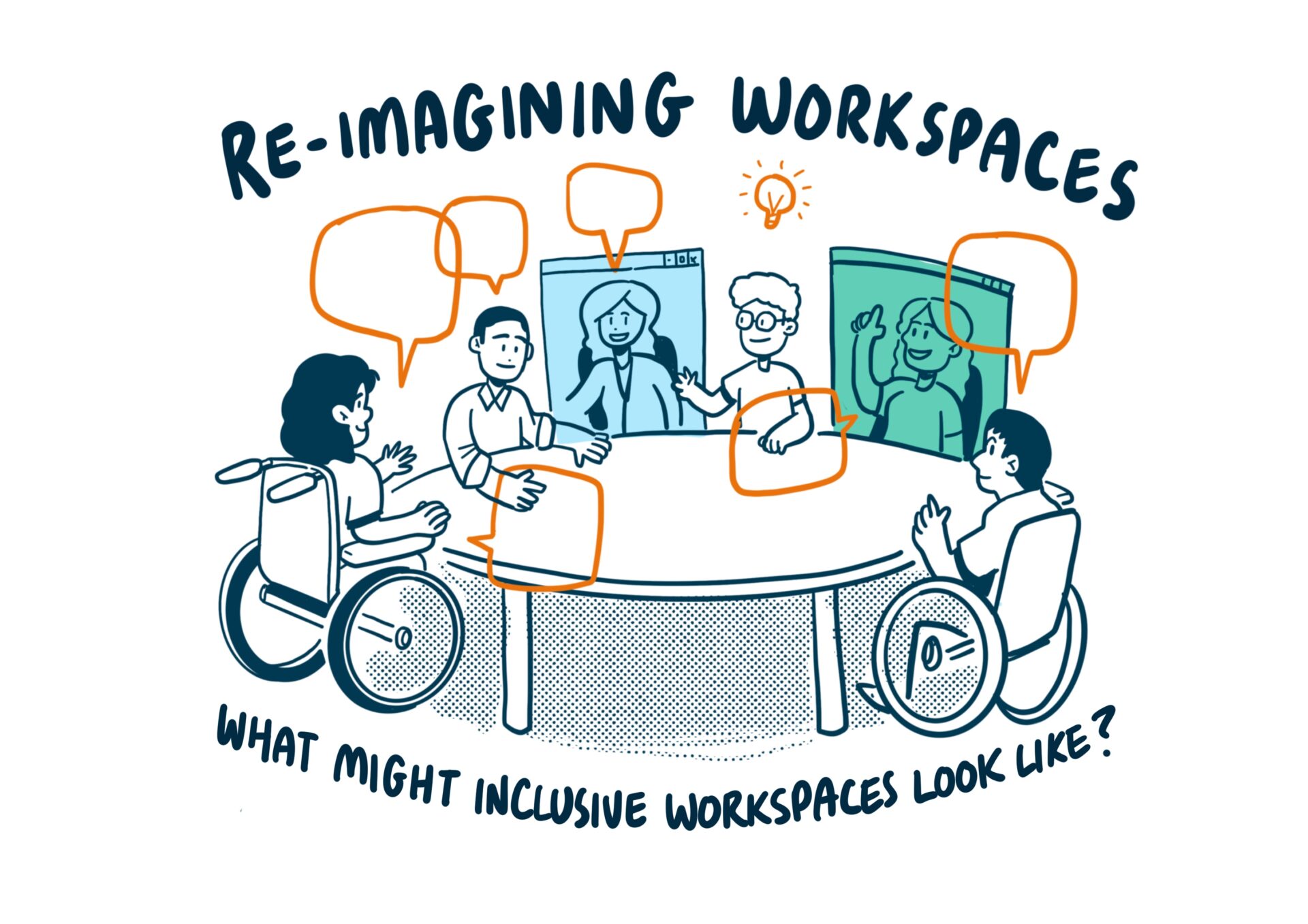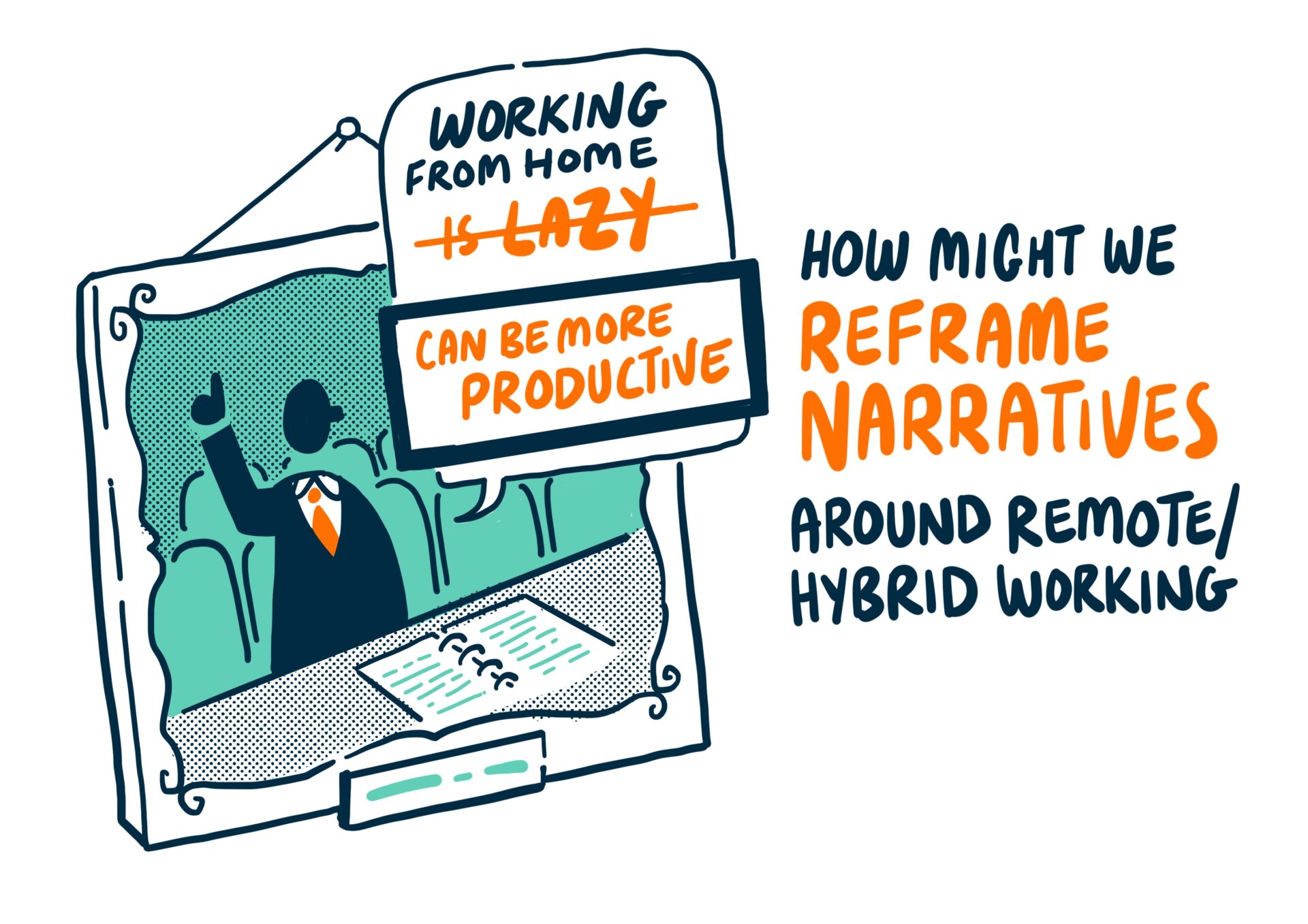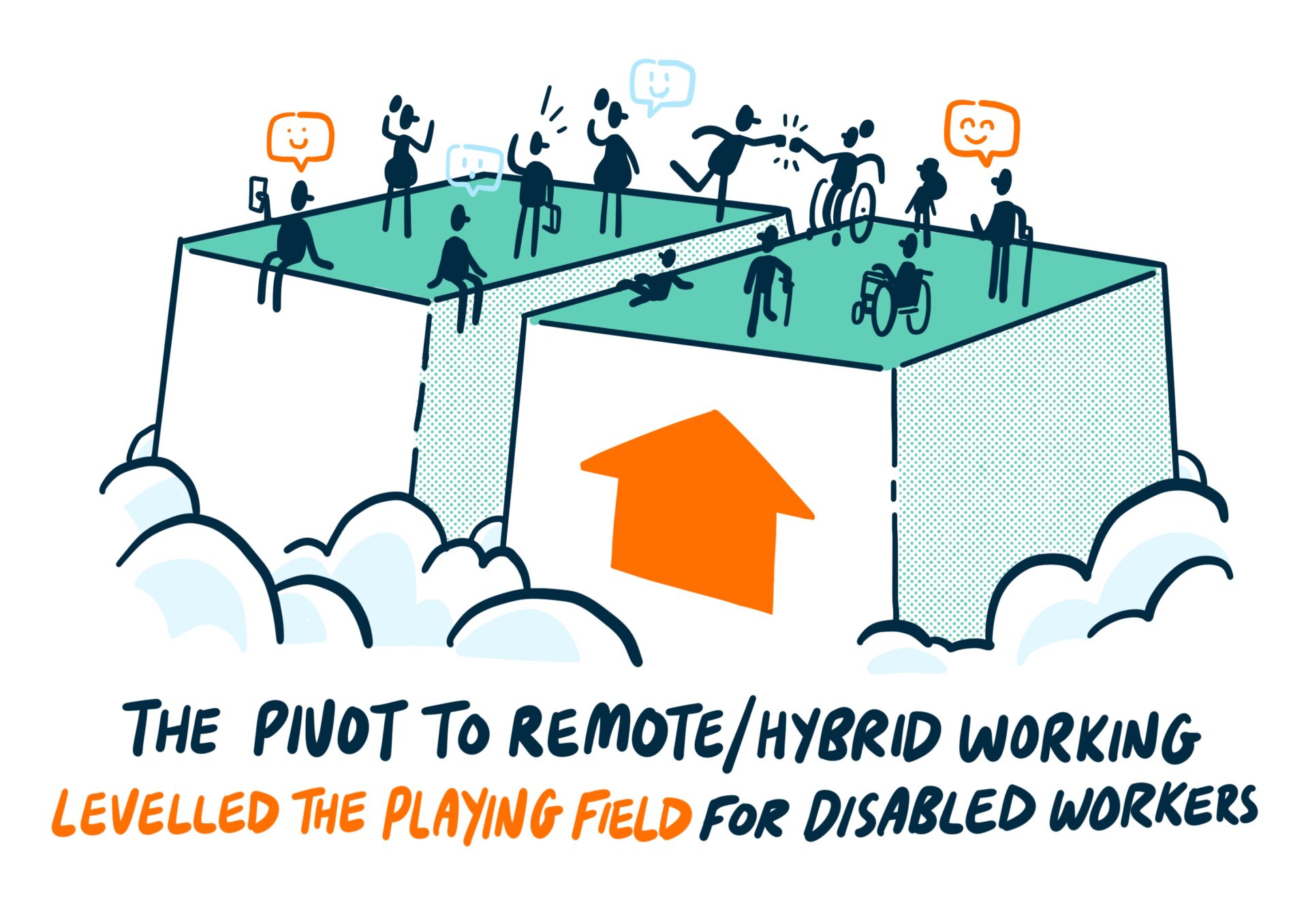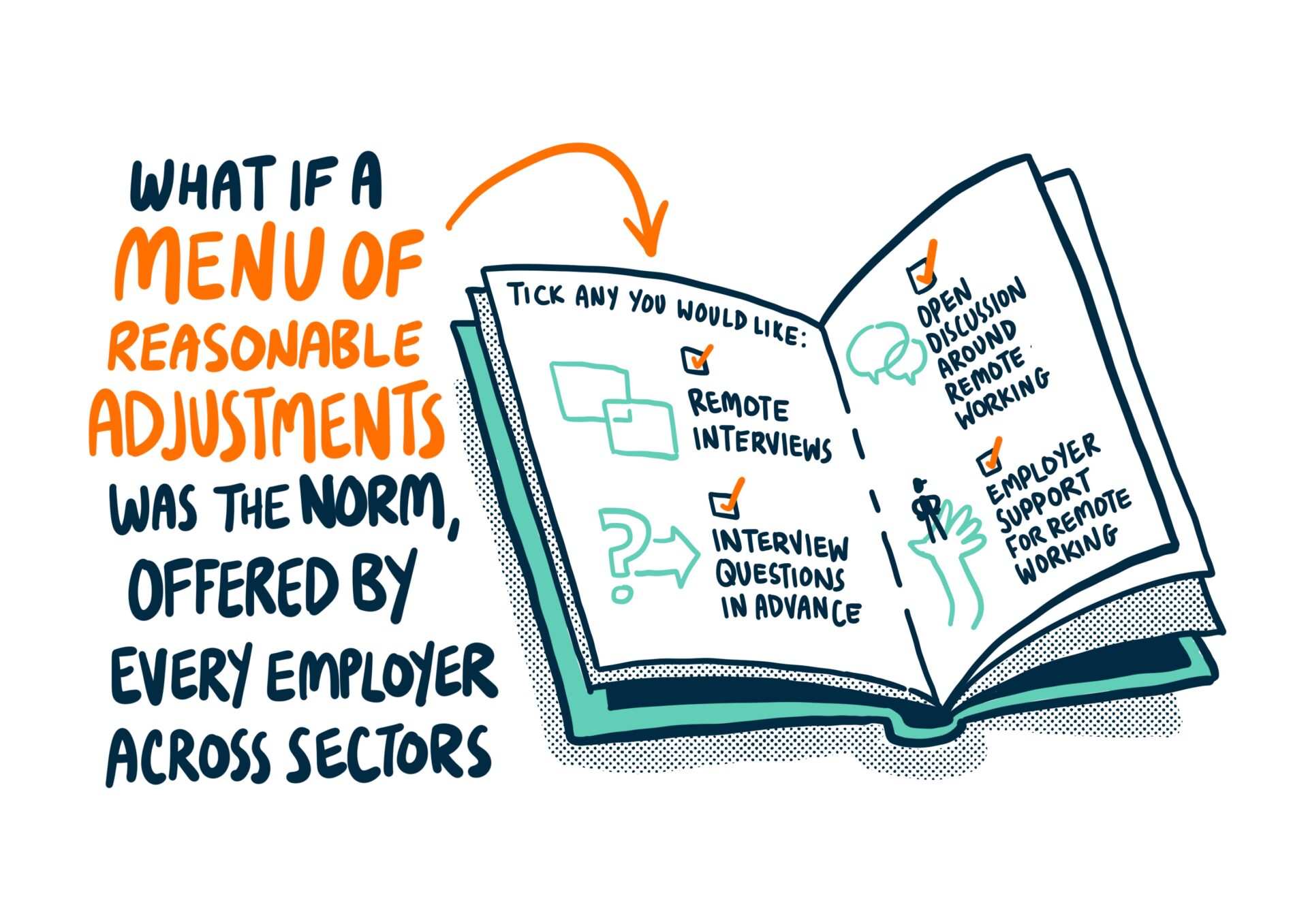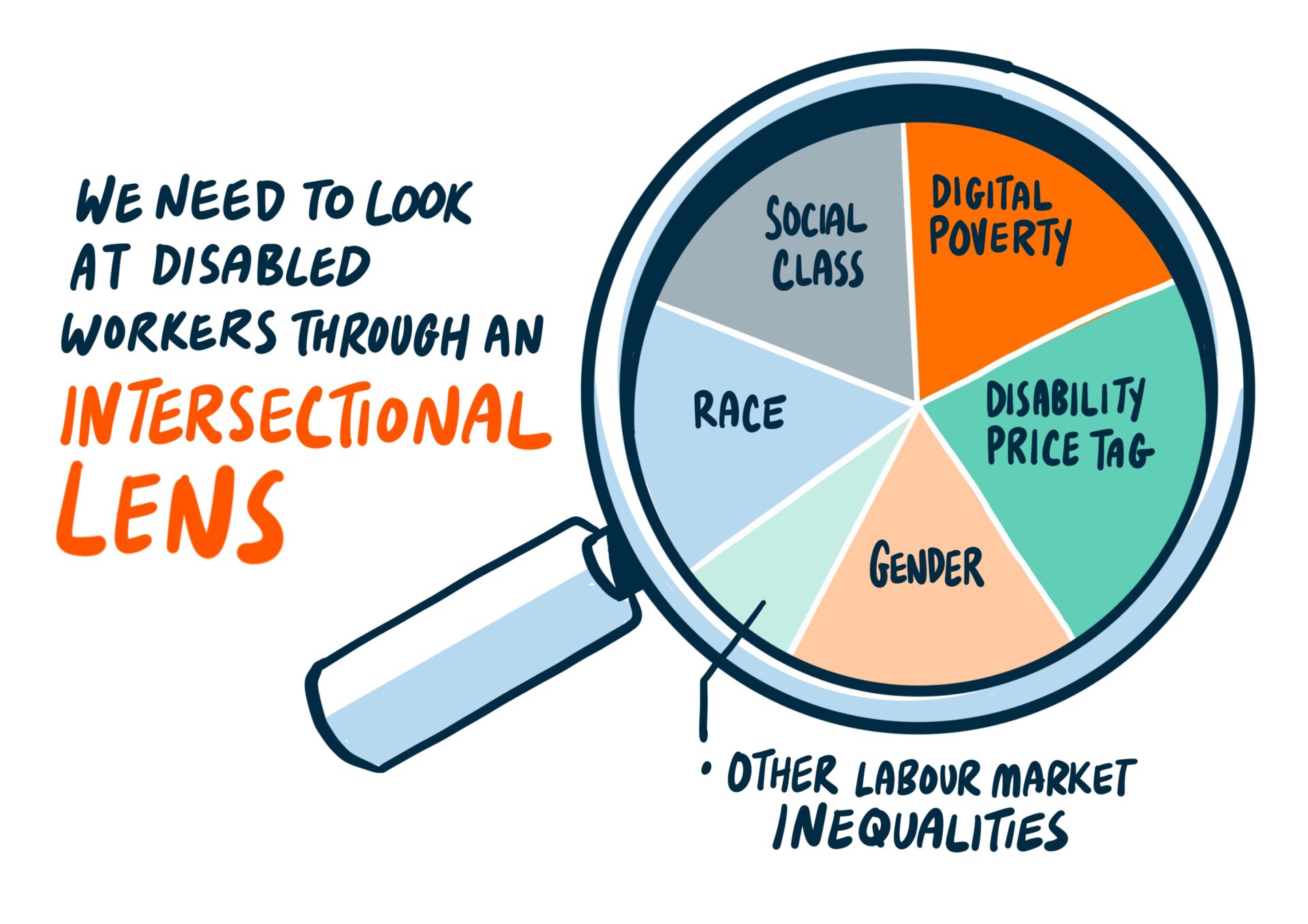In May 2023, we held an informal, online roundtable with activists, practitioners and scholars investigating remote working and disability to share some emerging themes from our research. You can watch a visual timelapse of the roundtable discussion further down the page, but in the meantime, here are some of our findings.

Image by Chris Redford at Nifty Fox Creative, 2023, CC-BY-NC
From our data, it became clear that remote and hybrid working holds immense potential for inclusion for those with disabilities. This raises many questions about what it means to work, how and why we value physical presence in the workplace, and how equitable strategies of remote and hybrid working can be implemented.
We are continuing to research and think through possible answers to these questions. In the meantime, here are some preliminary suggestions from our data and roundtable discussion, with thanks to our interviewees, respondents, and those who joined us for the roundtable.
Reframing narratives
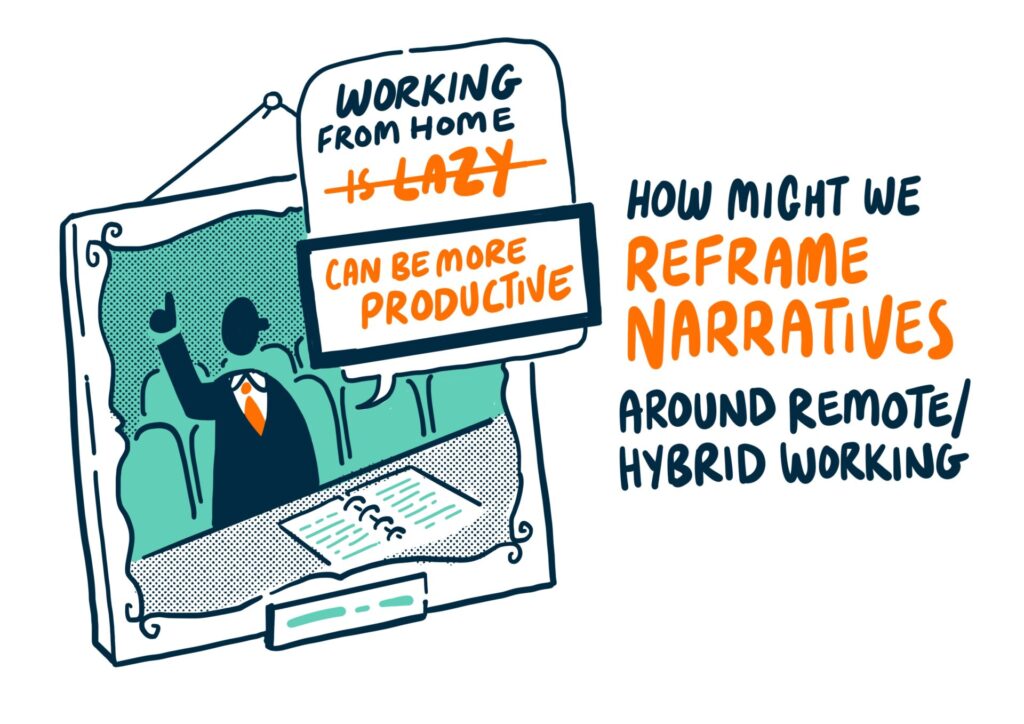
Image by Chris Redford at Nifty Fox Creative, 2023, CC-BY-NC
Reframing narratives can be a key tool in building equitable and sustainable working practices and norms that push back against claims that working from home is somehow ‘lazy’. Taking control over how the debate is framed can also be a way of regaining power within the discussions currently taking place.
Reframing, according to the work of American cognitive linguist and philosopher George Lakoff, is not an overnight process, but a lengthy battle of power contestation and political will. So, where do we start? We might think about settling on a way of talking about remote and hybrid working that can proactively convey its inclusive potential in a way that also aligns with the commercial and economic interests of businesses and employers. This may vary from business to business, and sector to sector, but could include emphasising productivity gains, well-being and morale, employee engagement, and how a diversity of skills, experiences, and worldviews can help build resilience.
Levelling the playing field
A key insight from the pivot to online working during the Covid-19 pandemic was that, in many respects, it levelled the playing field for disabled employees. We noted this both in the way that exclusionary built environments were no longer relevant, but also in the way that exclusionary attitudes and work-related expectations shifted.
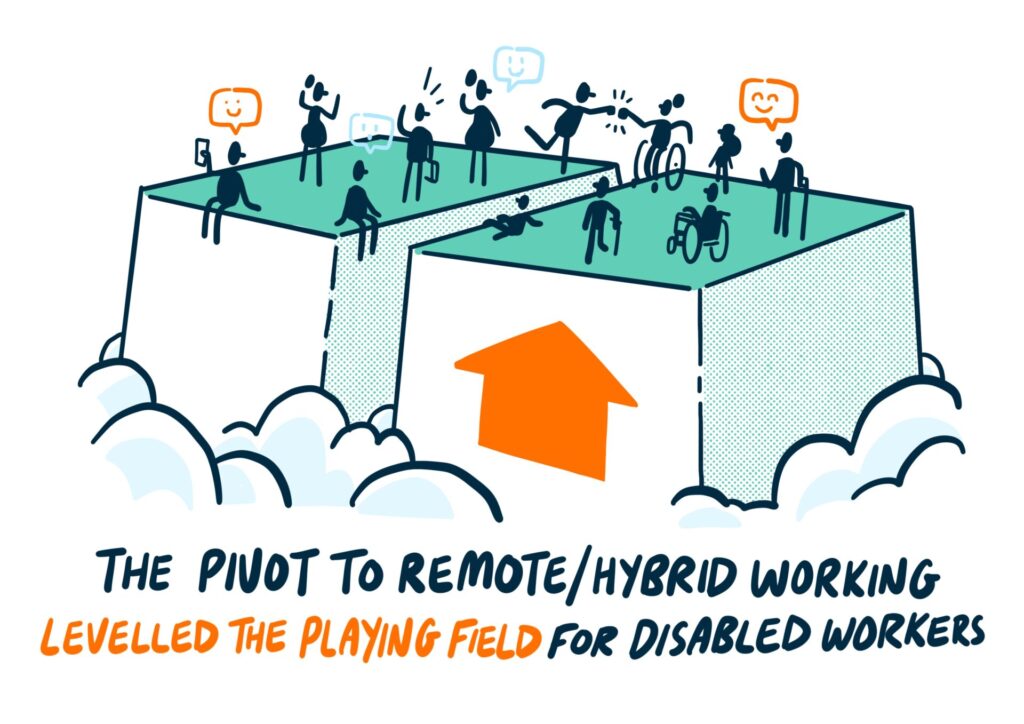
Image by Chris Redford at Nifty Fox Creative, 2023, CC-BY-NC
Nevertheless, this does not mean that all remote and hybrid working schedules are automatically fully inclusive or equitable, and care needs to be taken in their design and implementation. This may mean a personalised approach to ensure maximum inclusion, whilst also keeping commerical goals such as team building and networking in mind. Some employers are experiementing with ‘anchor days’ where teams come together, in person, to build those working relationships that might otherwise remain underdeveloped in remote working contexts.
There’s a disability price tag here too
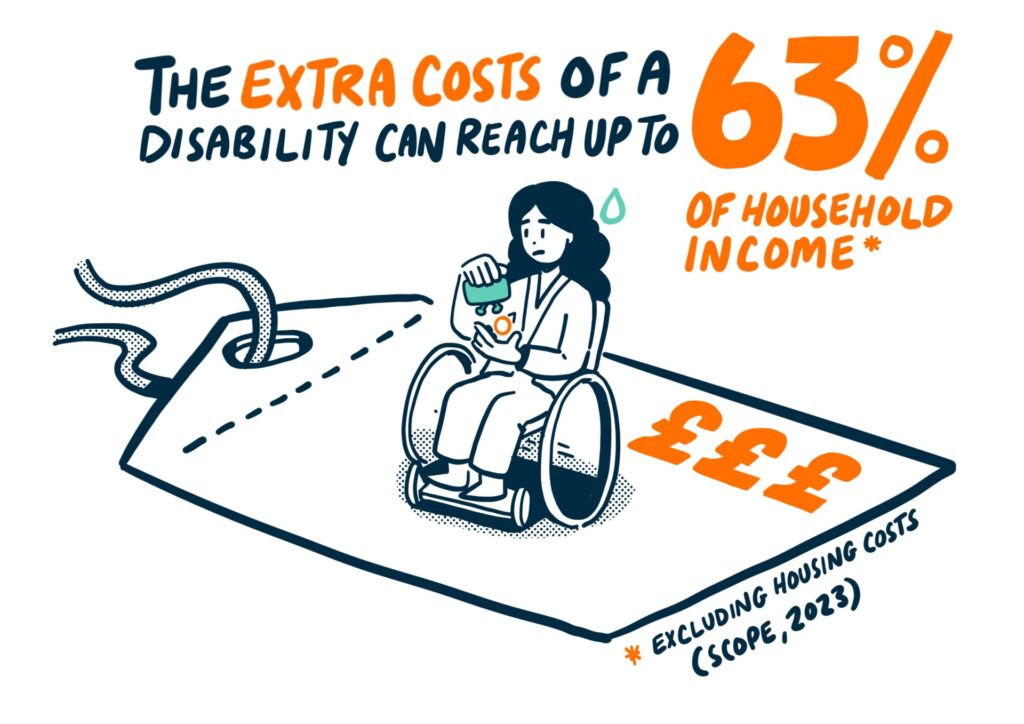
Image by Chris Redford at Nifty Fox Creative, 2023, CC-BY-NC
Life simply costs more when you have a disability. This applies equally to work, and while remote and hybrid working can improve access to the labour market for disabled employees, we need to take care not to exacerbate the ‘disability price tag’.
Who will fund the equipment needed to work at home? What about the costs of additional heating or cooling, electricity and internet connection services? Some of these concerns will apply equally to non-disabled employees, but those with different work-related needs may require different software and hardware, as well as different needs to manage their environment to stay well and to stay productive. Careful planning and dialogue with all employees working remotely can, then, be useful to ensure that their working schedules are optimised for their needs and for the employer’s requirements.
It’s equally important to bear in mind that, because being disabled costs money, disabled employees may not have the extra space to set up a quiet, comfortable home office. They may start out at a disadvantage simply because of their disability. Again, employer-employee dialogue can be key here to ensure that goals remain aligned and differences in needs are taken into account.
A menu of reaosnable adjustments
A clear finding from our research was that things improve when we work together. Asking about reasonable adjustments should not be left to the disabled employee or interviewee alone, but could be a dialogue with the employer. One way of achieving this is for employers to display a ‘menu’ of reasonable adjustments that they are already offering, or that they could offer easily and at little to no extra cost.
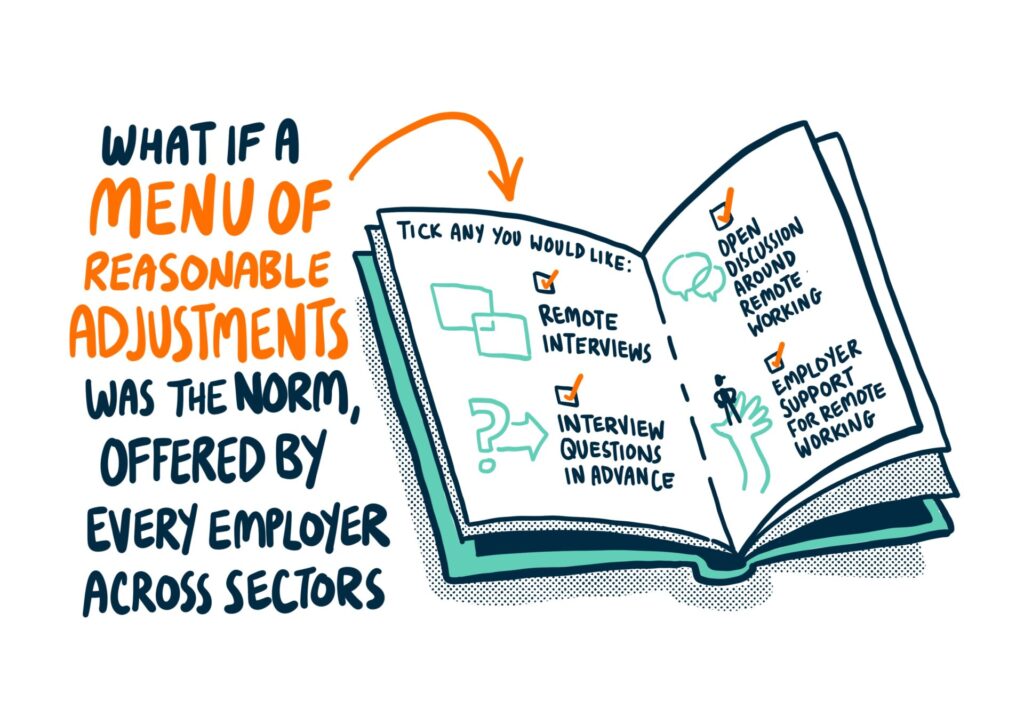
Image by Chris Redford at Nifty Fox Creative, 2023, CC-BY-NC
For example, if remote or online interviews, and the offer of interview questions in advance, are something your business has offered in the past with little disruption, why not make this information available on your website? Our data shows that when employers take the first steps to begin conversations about reasonable adjustments and inclusion, discussions can be more open and more productive. They can also make your business more welcoming for disabled employees or interviewees.
An intersectional lens is essential to understand the ongoing disability employment gap
While the pandemic lockdowns allowed us to query the inclusion potential of remote and hybrid working practices for disabled employees, we must remember that exclusion on grounds of disability does not happn in a vacuum. Realising full inclusion, and eliminating the disability employment gap, will not happen through the normalisation of remote working alone.
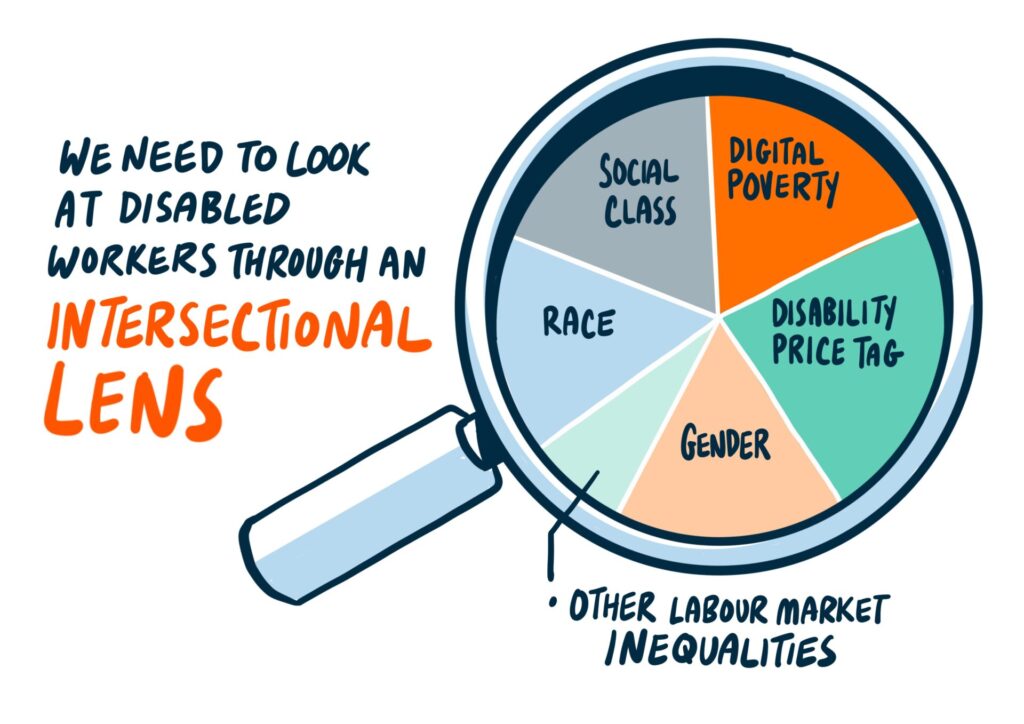
Image by Chris Redford at Nifty Fox Creative, 2023, CC-BY-NC
We should remember that disability is one characteristic that can produce exclusion, along with a range of others, including class, age, race, gender, sexual orientation, and many more. We need a holistic approach to workplace inclusion that partners with activists, practitioners and scholars engaged in equality campaigns. Equally, we need to continue fighting for inclusion beyond the workplace, extending to social and educational support for those with different abilities.
The disability employment gap will not be solved only in the workplace, but through wider, holistic campaigns that recognise and realise the added value that diversity brings.
***
Below is a video timelapse that visually captures some of the discussions from the roundtable, by Chris Redford at Nifty Fox Creatives. If you’re prefer to watch it on Vimeo, please click here.
We are grateful to Emma Partlow for sharing her experiences and insights with us, and to everyone who attended and partcipated in the event.
We are grateful to Chris Redford at Nifty Fox Creative for capturing the discussion and bringing these ideas to life in visual form. Images are available for reuse under Creative Commons CC-BY-NC licensing. In other words, please share the images with credit to Chris Redford and Nifty Fox Creative, and link to this page.
With thanks to the University of Kent IRF for supporting the roundtable event.
